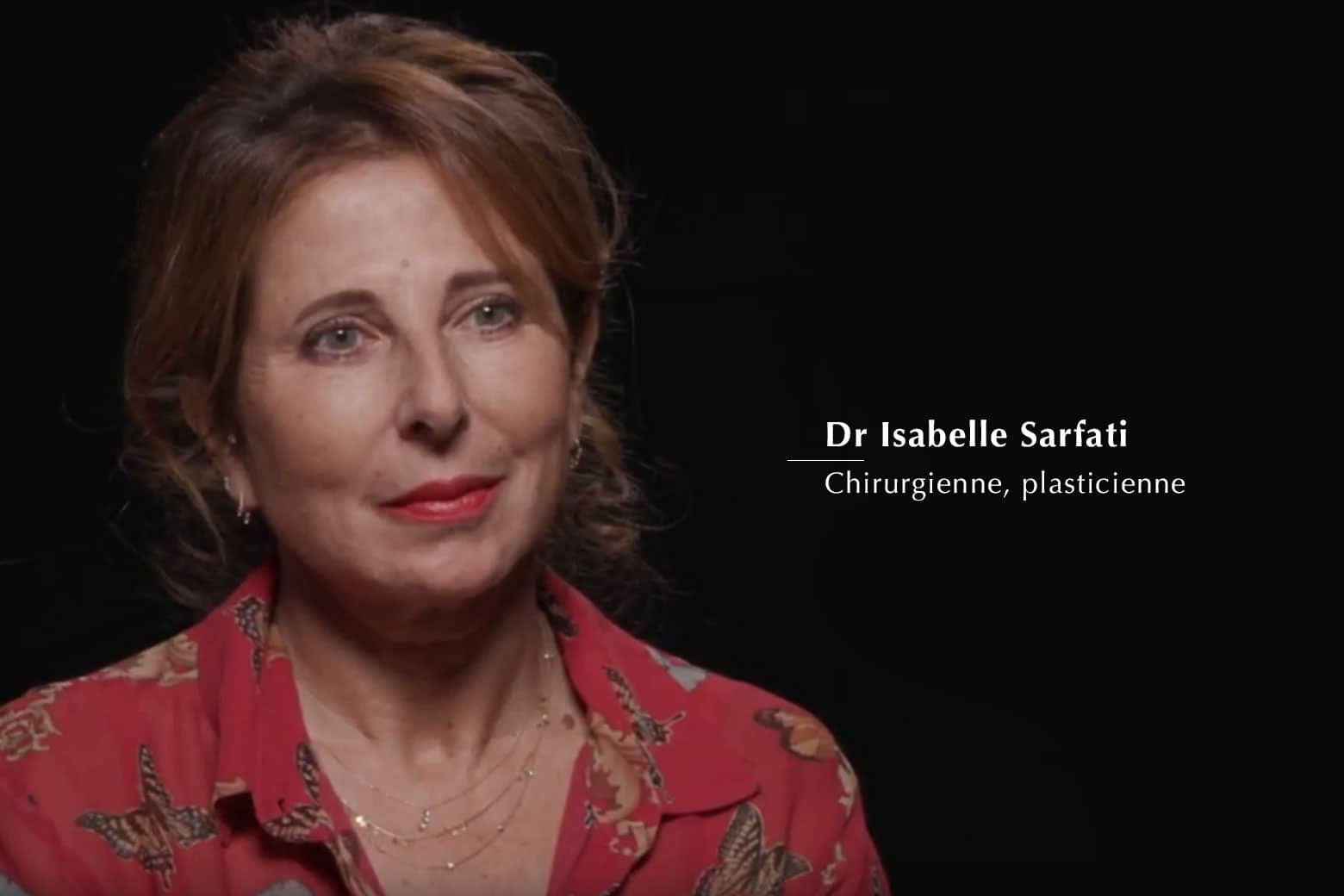Portrait of a surgeon – Dr Isabelle Sarfati, plastic surgeon at the Breast Center
Interview in October 2018

I am specialized in breast surgery, and in the context of breast cancer, more particularly in breast reconstruction. I went to medicine to do plastic surgery. I knew from the start that I did not want to be in a therapeutic position, I did not want to confront myself directly with issues of life, death, treatments, and that I wanted to repair. I wanted to fix the image.
I have the impression that my colleagues save lives, and that I save appearances, and that it is not so futile to keep up appearances. Certainly it is not vital, but the relationships that we can maintain with our appearance, with what we see of ourselves, tell us who we are and dictate to us in a certain way who we are. Anyway, it’s interactive, and by working on the appearance, we change people’s lives.
In a way, cancer is an accident of life. Sometimes it costs a breast, and some patients have even called it “the bite of death”, as if death had stung only one nipple and left them safe. This repair is something that repairs more things than that, which allows women – if they want it, it’s absolutely nothing obligatory, really I understand very well all those who don’t get reconstructed –, but for those who want it, it can allow, when you get up in the morning, when you take a shower, when you get dressed, not to necessarily think about what happened, not to dive back into every time in this sometimes difficult time of their lives.
It’s a weapon like the others, it’s not better than anything else. Some women prefer to work on themselves and accept and assume certain disgraces or malformations or certain accidents. Others prefer to act on appearance. In fact, everyone works on a little bit of everything, but being able to do something is very important, even if you don’t.
Breast reconstruction is craftsmanship. That is to say, it’s not a creation every time, it’s really an imposed figure, I know exactly what I have to do, what volume I want to do, how I want to do it. So in that sense, there is no creation, there is craftsmanship because there is technique. I make sculpture on a very noble material which is the human body. I sculpt women’s breasts.
I feel much closer to a carpenter than to Picasso. I feel close to the catering trades. When I discuss with people who restore paintings or restore antique furniture, I have the impression that we do a bit of the same job. When I talk to artists who create, I don’t really feel like I’m doing the same job as them.
I want to restore what I also see in the lives of doctors, I have the impression that when patients talk about their doctor, they don’t always realize what it’s like to be a doctor . And I talk about it all the more freely because I don’t consider myself to be a doctor. And I have boundless admiration for those who save lives… Both a lot of admiration and a lot of pain for them.
I work with oncologists and I am impressed by the violence of the impact of cancer on patients – that is not a discovery – but on doctors too. I realize how much pain they have, spending a day caring for people in difficult situations. We do not come out unscathed from a consultation, from a day like that. I am impressed by the psychological involvement and the repercussions in the lives of oncologists linked to their profession.
On the contrary, instead of becoming hardened, they voluntarily expose themselves more and more to this relationship, to empathy, to patient support, they become more and more attached to their patients, and that weighs on them. . And I am at a kind of crossroads where I have the impression of reconstructing the patients who come to me, of mothering a little the oncologists with whom I work in order to try to make their lives softer, more pleasant, trying to make their work environment easier for them, and I think that’s an important position. Making life easier for people, doctors and patients is important to me.

Laissez votre commentaire